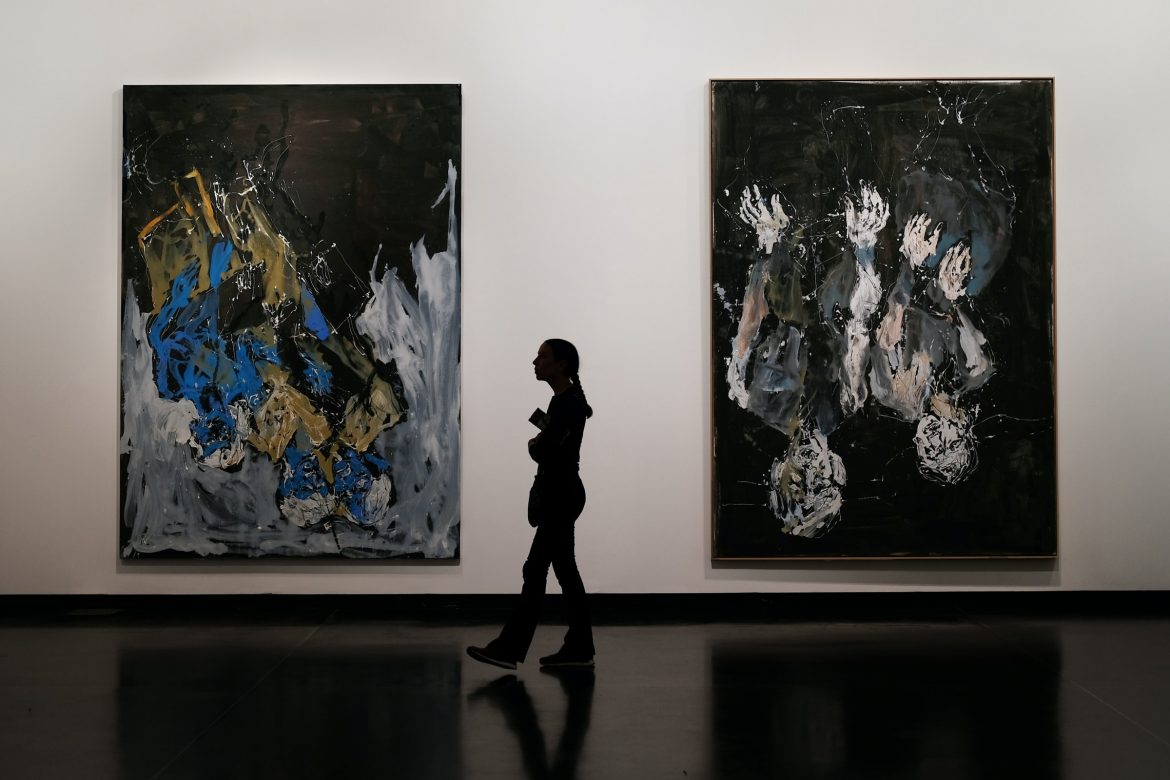Throughout the career of any artist, the need to talk about your art is always present. Gallerists and curators will want to know why they should work with you, clients will want to know the story behind the art and how your aesthetic fits with what they want, even friends at dinner parties will want a glimpse into what it is you do as an artist and what message you are trying to convey.
Positioning yourself and your art is not usually an artist’s strength. Self-promotion is something that makes many artists—especially the more sensitive and introverted—extremely uncomfortable, and the marketing side of the art business is often avoided like the plague or hastily unloaded to someone else whenever possible.
But the fact of the matter is, no one is ever going to care as much about your success as an artist as you will. You know your art more intimately than anyone, and therefore have a bird’s eye view into the power and meaning of your art. However, articulating the things you intuitively understand about your own work is not so simple. In fact, it can be downright daunting.
You need to be able to break your work down simply into a succinct and accurate snapshot of who you are as an artist and what your art is all about—and you need to be able to do this for a variety of different audiences. Your explanation of your work should speak to curators, gallerists, and collectors as well as to the average person who may not be well-versed in “art speak.”

The Elevator Pitch
There is a common concept in the business world known as the “elevator pitch.” This is the notion that you should be able to pitch yourself, product, business, etc. in the time it takes to make an elevator ride—about 30 seconds. Sound impossible? It’s not. Once you’ve got a formula in place for how to best describe yourself and what you do, you’ll find talking about your art becomes much easier and you’ll see the positive results in your career as your professional communication skills increase.
The Importance of Pitching Yourself
As an artist, one of the primary reasons we create art is to articulate something that cannot be said any other way. We set about creating a manifestation of an abstraction—a thought, a feeling, an idea, an experience—and believe that the work should speak for itself.
And all good art does. Art that transforms, inspires, and enlightens says so much more than we could convey by words alone.
So why must we speak about it? Why not let the art speak for itself?
Because for art to do the transformative work it’s meant to do, it needs to get in front of human eyes. And in order to get in front of human eyes, it needs to get past the gatekeepers. And the gatekeepers have business plans, curating strategies, marketing statistics, and a bottom line. Not to mention a host of other artists who are also constantly vying for their attention.
Use your elevator pitch to hook the interest of their rational minds and let the power of your art do the rest. Don’t fall into the trap of thinking you can skip the important step of pitching your work to the ears of those who can make a difference in your career.

Developing Your Elevator Pitch
So where do you start? Art is such a vast subject and your journey as an artist so complex, knowing where to begin can be the hardest part. Let’s walk through a few components to get the ball rolling:
1. Find What is Essential
What is the primary factor about your work that if left out, would leave you feeling as if your work had become lifeless or had lost meaning? What is the essential element that compelled you to create this piece or collection? What is the thing you most want people to see and understand when they look at the artwork? This essential component could be the driving force around a particular collection, your entire philosophy as an artist, or a single significant piece.
Spend some time brainstorming about what your essential element is until you can sum it up in a few sentences. This is the nucleus of your creative vision and lets the listener know who you are and what you are about without a lot of flowery language.
2. Don’t Make Things Up
Speaking of flowery language, if you are asked something about your art that you’re not sure how to answer, it’s okay to admit you don’t know. Creating art is an innate, intuitive process; it isn’t meant to be as comprehensible and analyzable as a table of data generated by automated systems. It is far better to be honest about yourself, your process, and what your art means to you than it is to create a word salad of hyperbole in the hopes you will seem impressive. Authenticity trumps illusion when it comes to making an impact with explanations of your work.
3. Focus Beyond the Visually Apparent
Anyone who is looking at your work will be able to tell what colors you used, what textures are there, and so forth. When you are talking about your work, you don’t want to simply point out what is right in front of their eyes. Try to add something to the experience by offering them something they can’t get from simply looking. Give them a behind-the-scenes look at what brought this art to life.
4. Avoid Hyperbole
While you do want to express the authentic process and meaning of your art, you don’t want to get lost in your own sense of poetry, expounding on the ethereal to the point of completely losing your audience. It can be easy to get carried away, using language that is meant to impress but may have the opposite effect of making you appear pretentious and disingenuous.
5. Keep it Positive
Some artists may feel a tad embittered by the necessity of focusing on the business side of art when all they want to do is create. As a result, they can fall into speaking about their art irately because they resent having to explain themselves and their work. This approach is not likely to make you many friends—or sales either. While the idea of the “difficult” or “dramatic” artist has been ingrained in popular culture, the art world is a world of professionals like any other and building a reputation for yourself as being belligerent, angry, or difficult to work with will harm you much more than help you.
6. Practice Aloud
It may feel silly, but practicing aloud can tremendously boost your confidence and help put you at ease when it comes time to talk about your art. The goal is not to memorize a script or sound overly rehearsed, but to have thought through and practiced your primary speaking points so that they can be spoken easily, accurately, and with confidence.
Conclusion
Talking about your art is something you will likely be required to do many times in the course of your career. However, it doesn’t have to be daunting or frustrating. By spending some time thinking through what the essential elements are to your work and your artistic philosophy, being authentic, avoiding negativity and hyperbole, and practicing until your language flows freely, you will be able to talk about your art confidently to any audience who views your work.
Author Bio
Alia Sinclair is a writer, poet, musician, and Editor-in-Chief of Patchwork Mosaic, an online magazine for creatives. She is an avid art enthusiast and lives on the West Coast with her ever-increasing library of books.









validcbdoil
12 August
“Yes, it’s beautiful,” – many of us express our love for art in something like this. Where does our eloquence disappear when we want to share our impressions of a painting? Why do we miss words when it comes to art? In her book How Art Can Make You Happier, Bridget Payne writes that speech helps shape taste and develop flair, so it is important to learn how to express in words what we see.
validcbdoil
11 August
It may feel silly, but practicing aloud can tremendously boost your confidence and help put you at ease when it comes time to talk about your art.